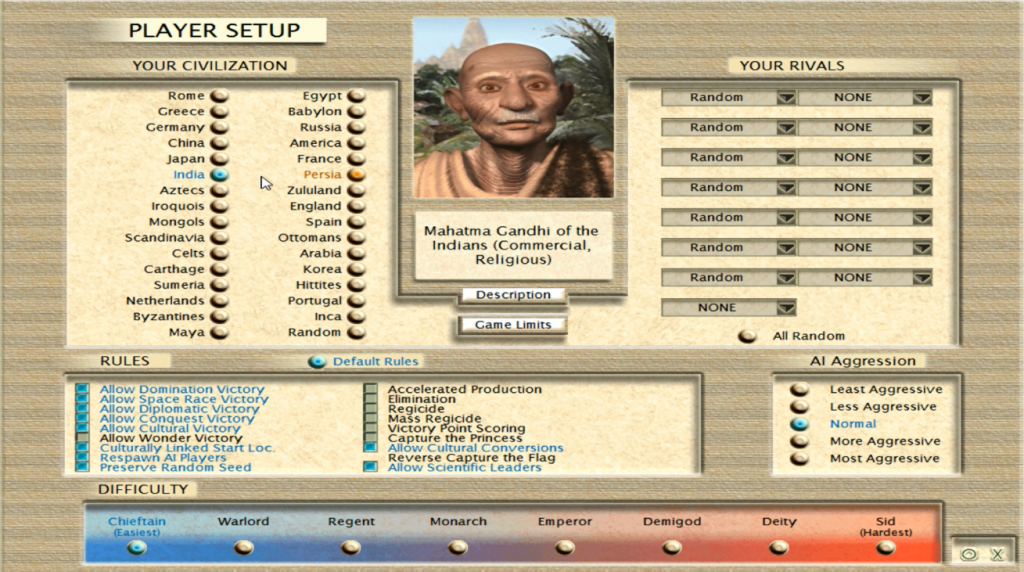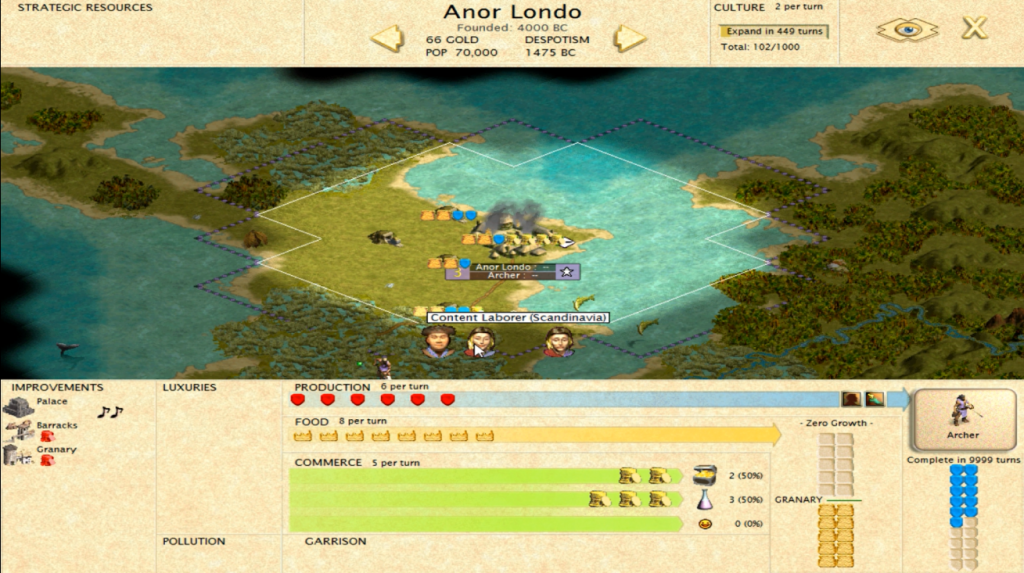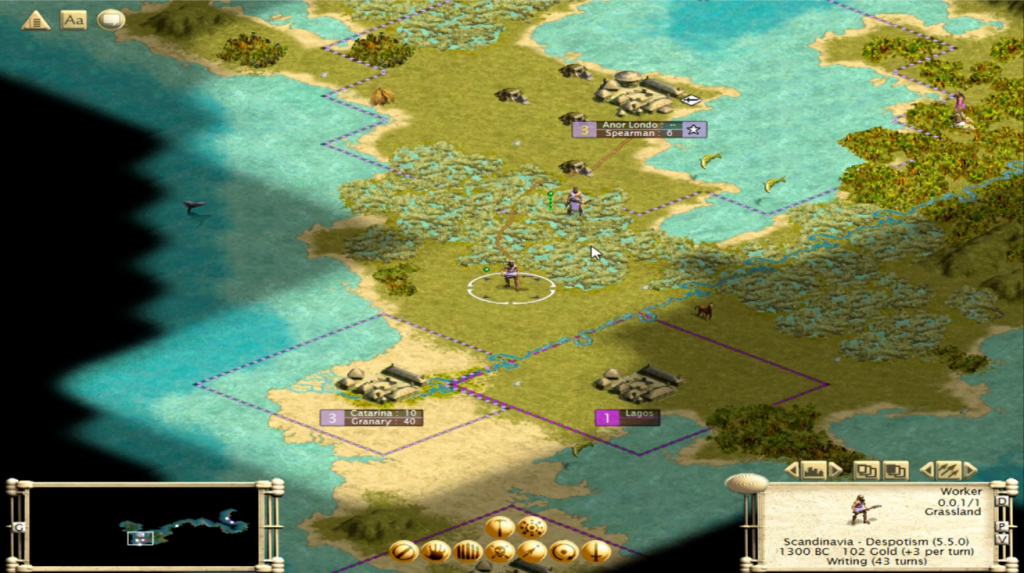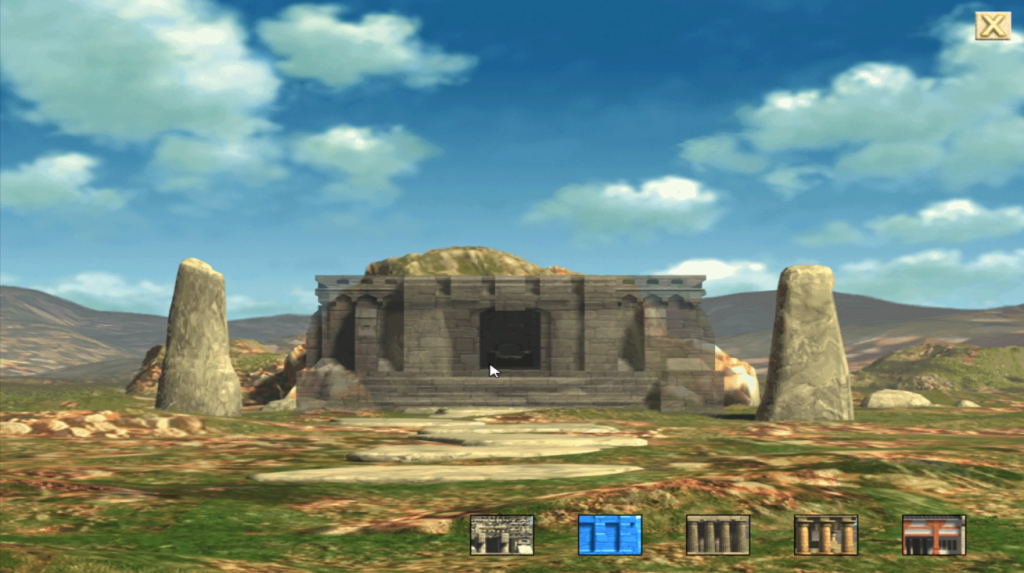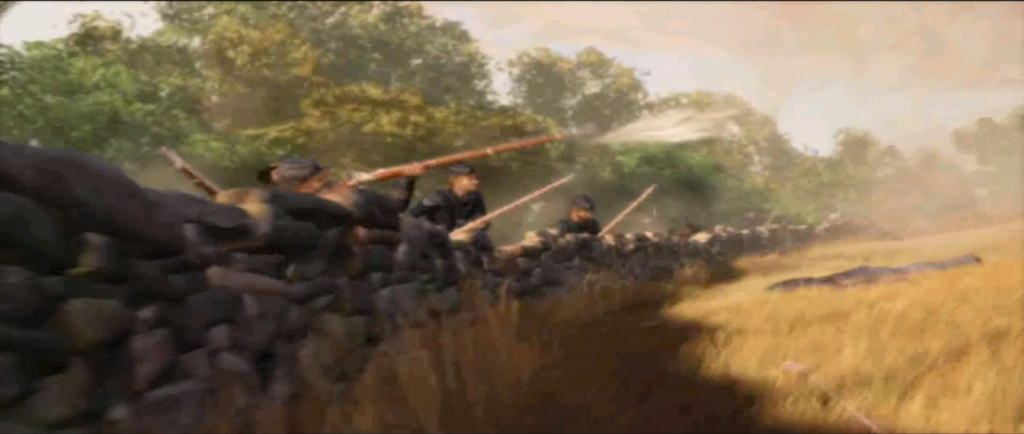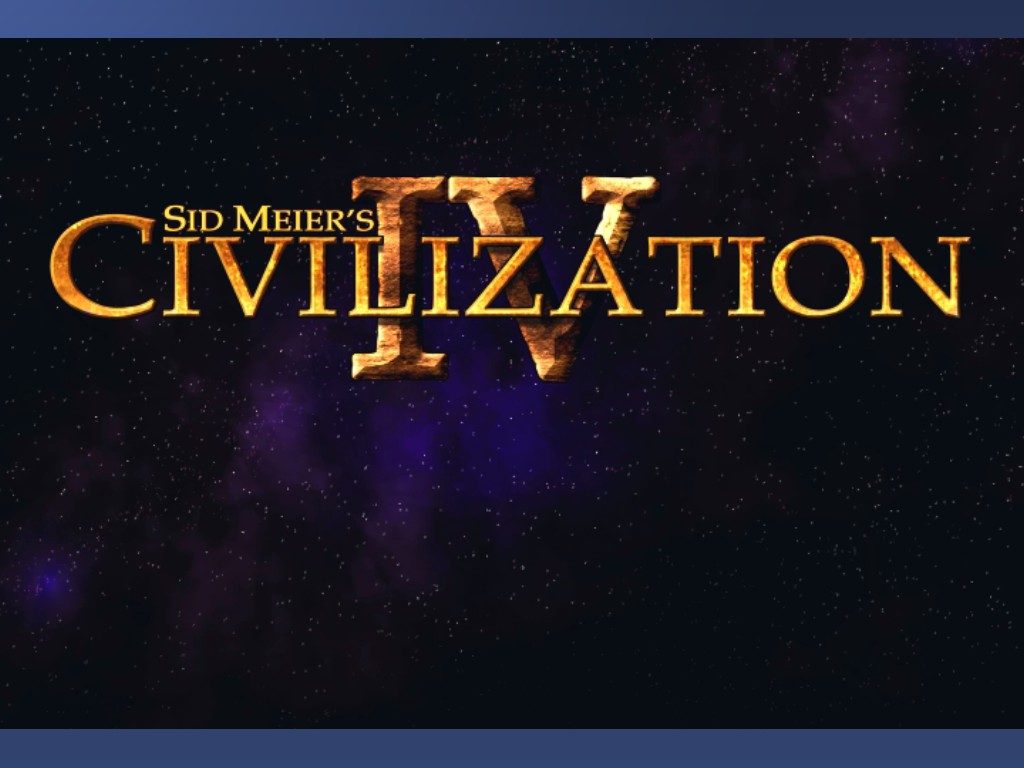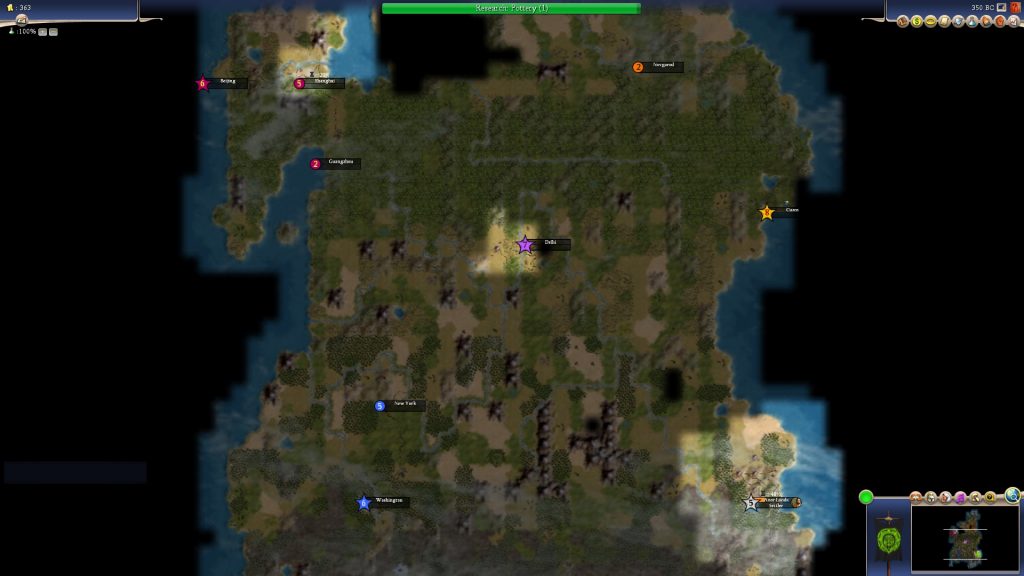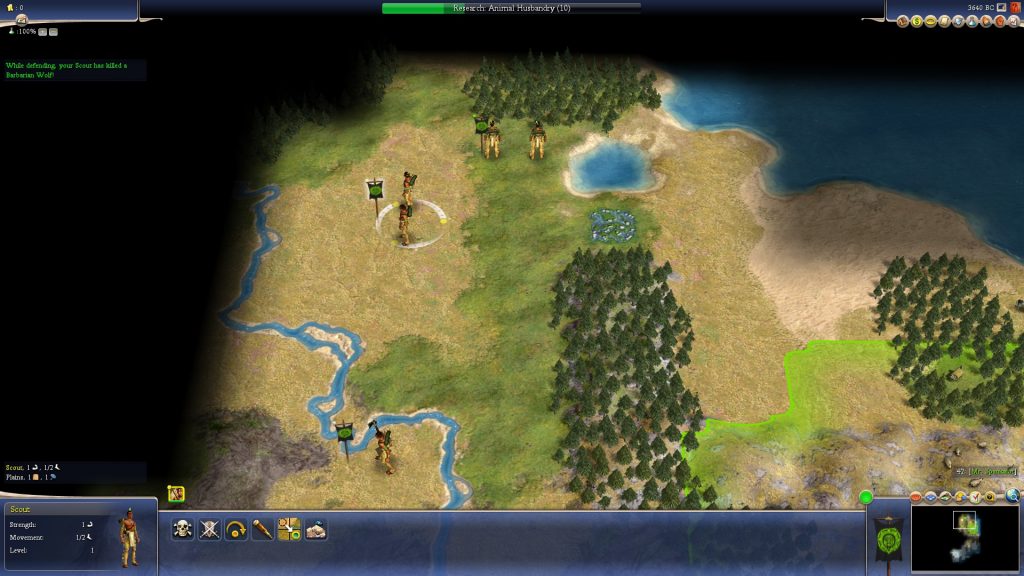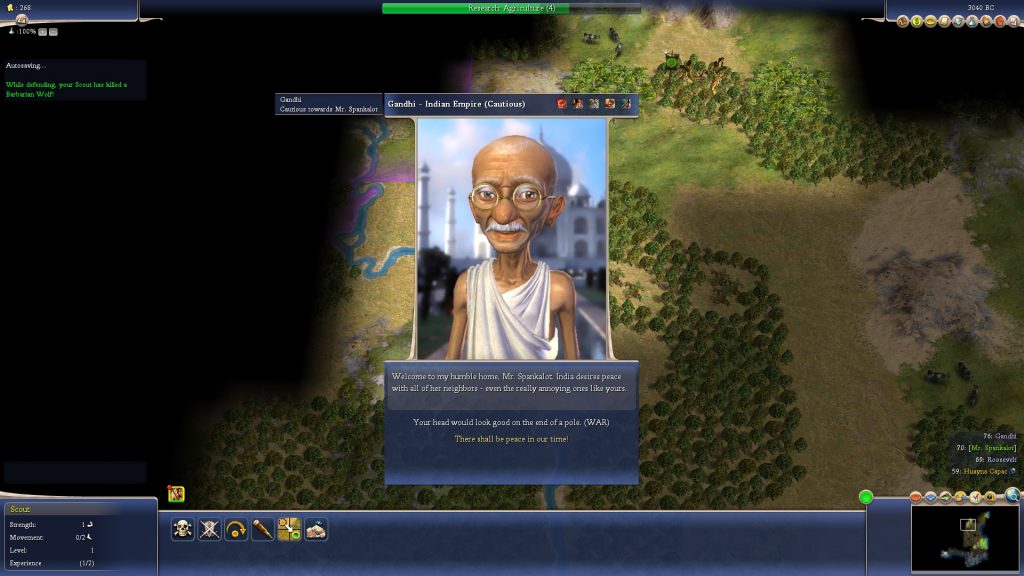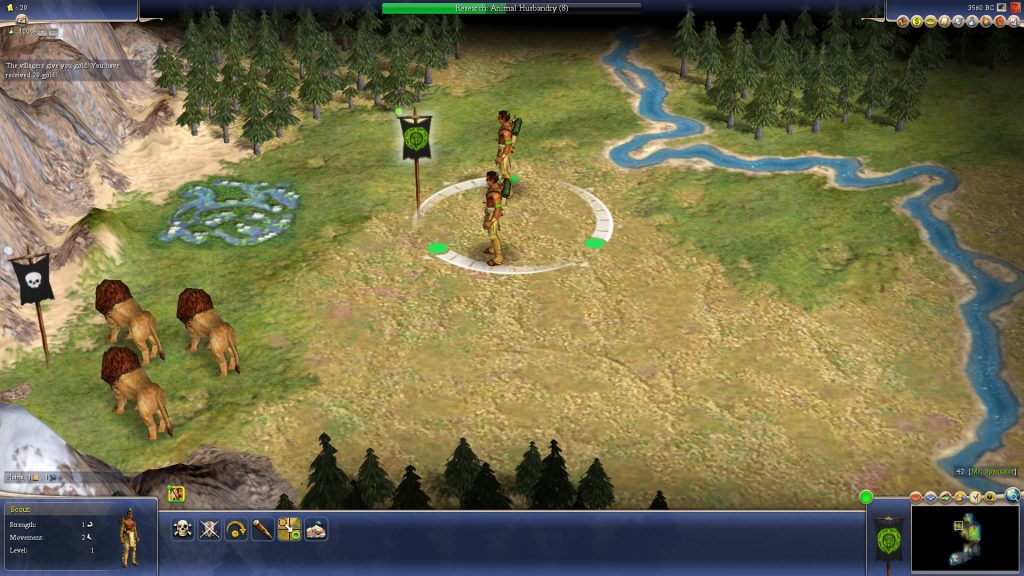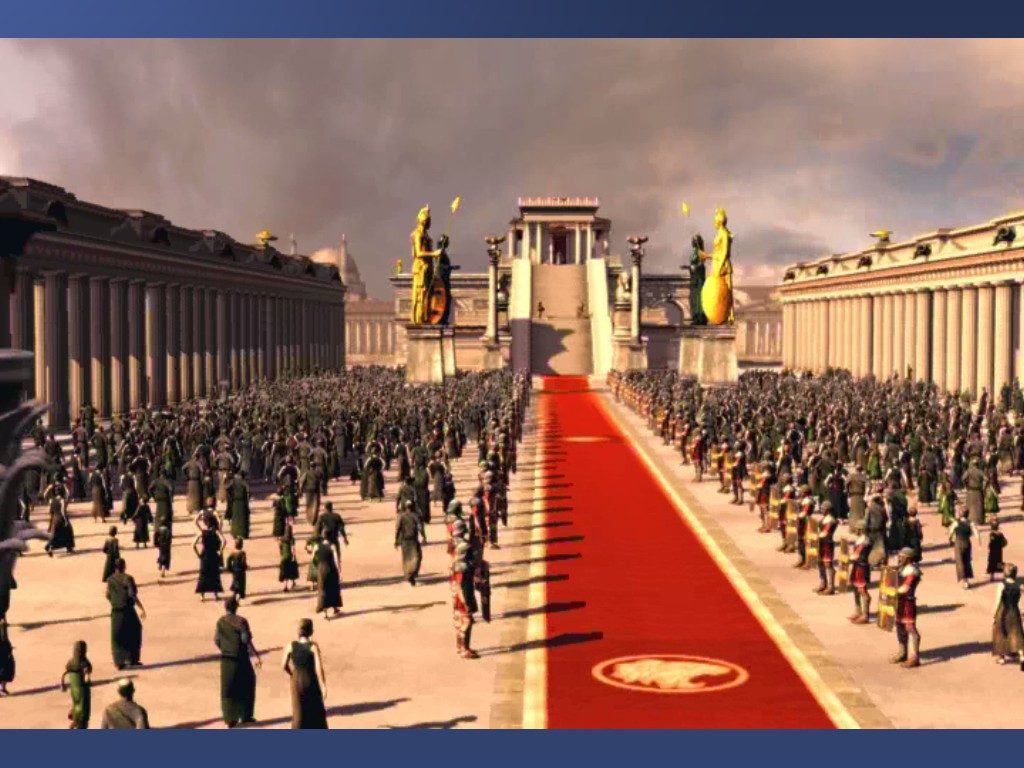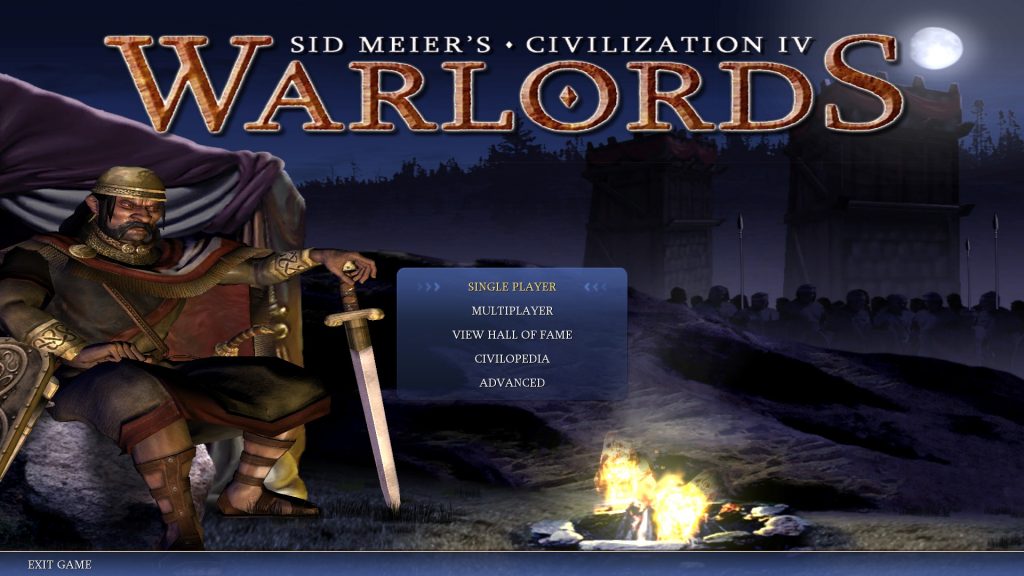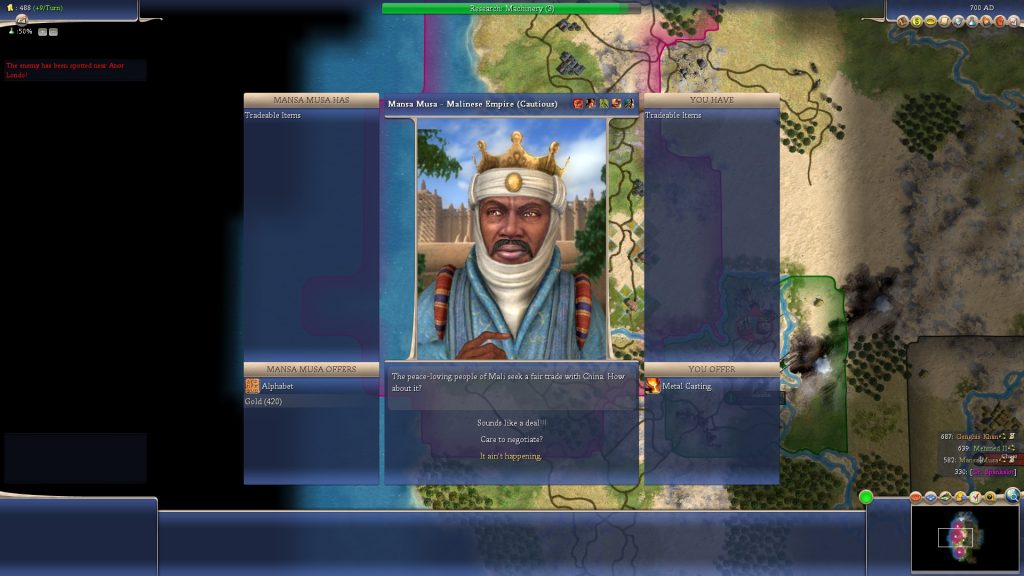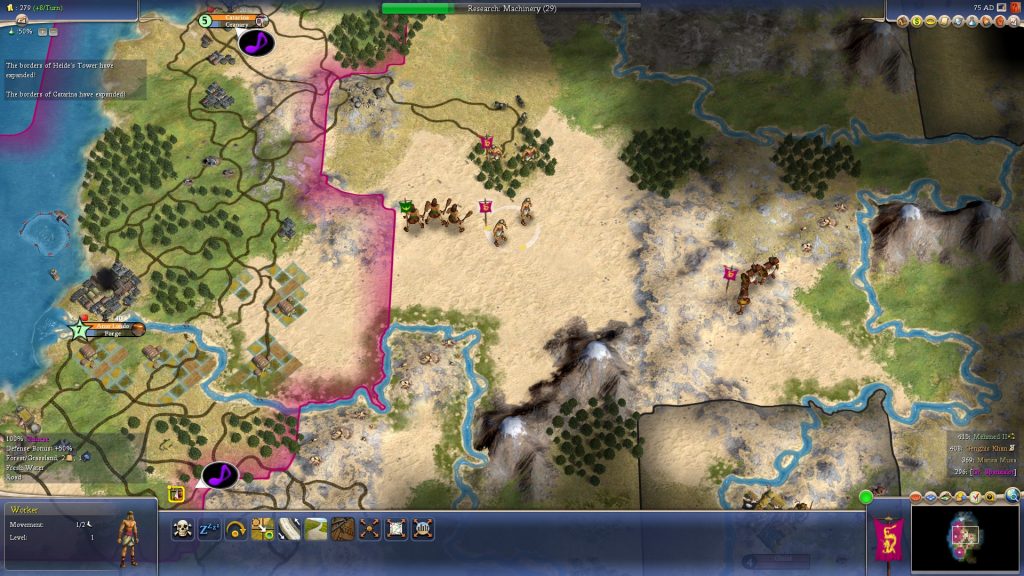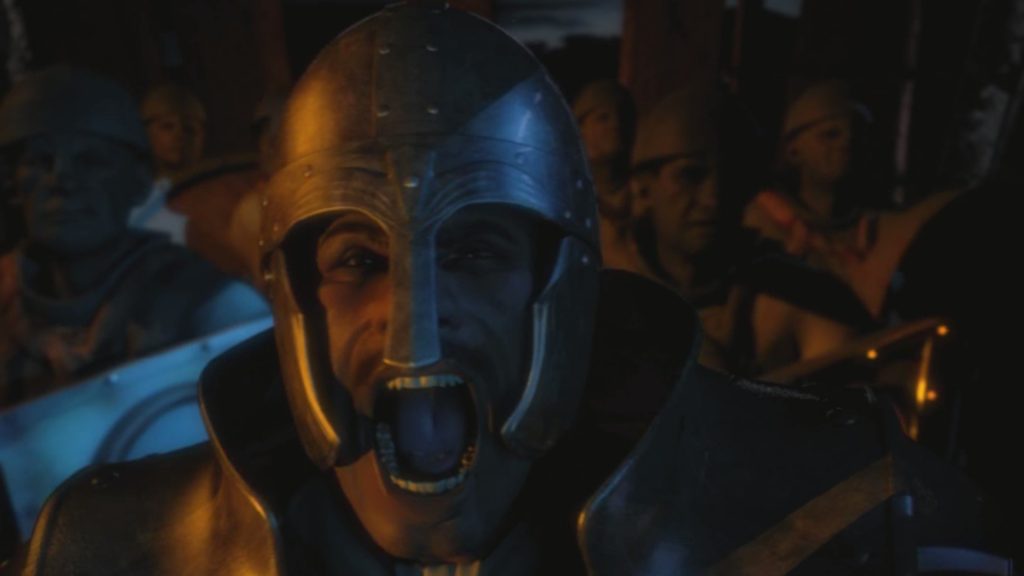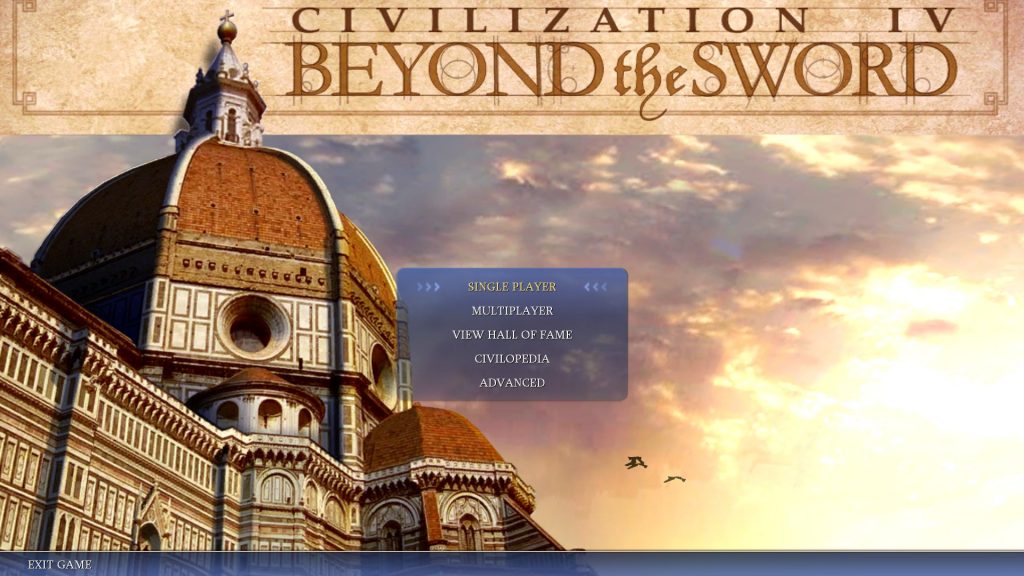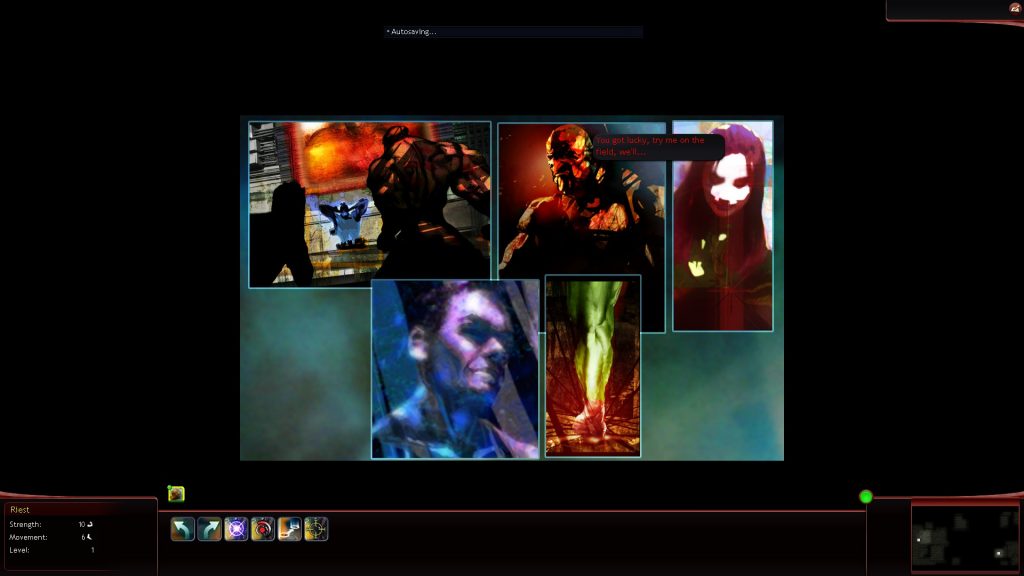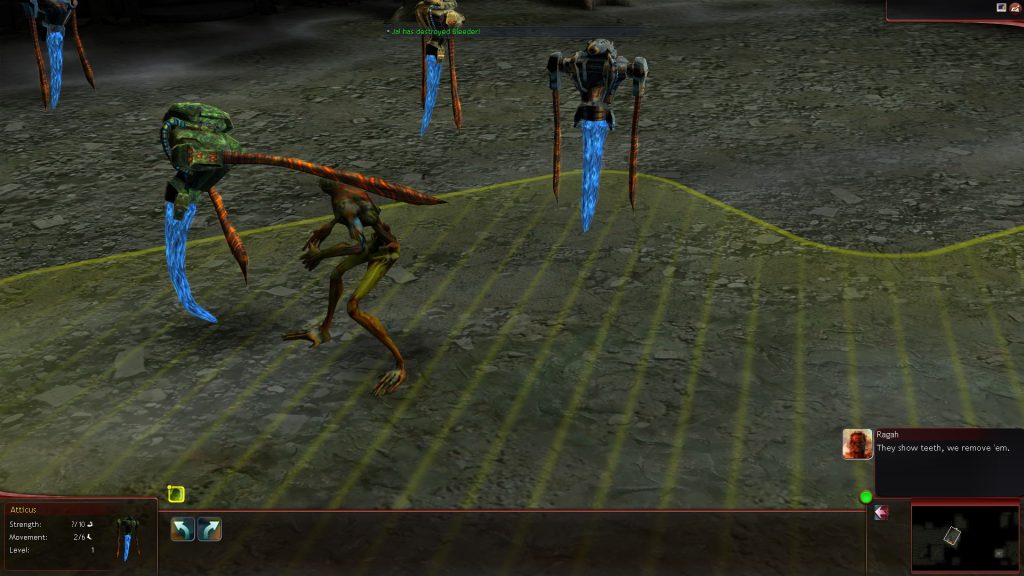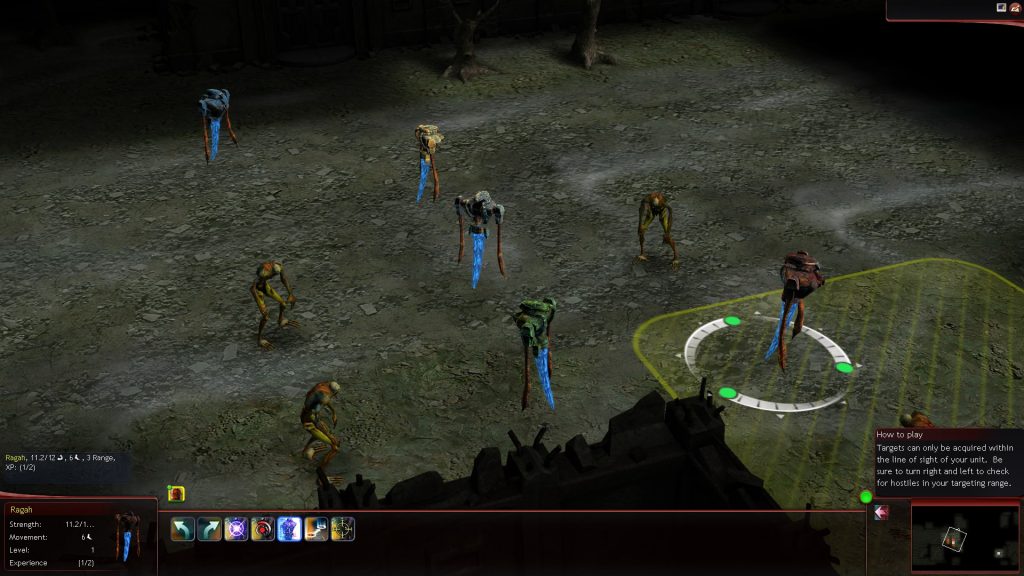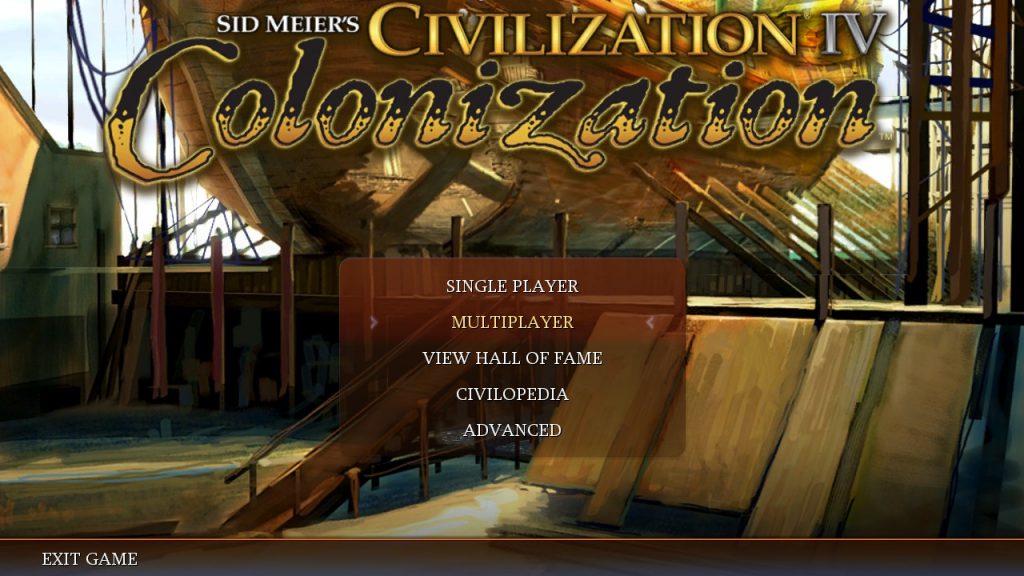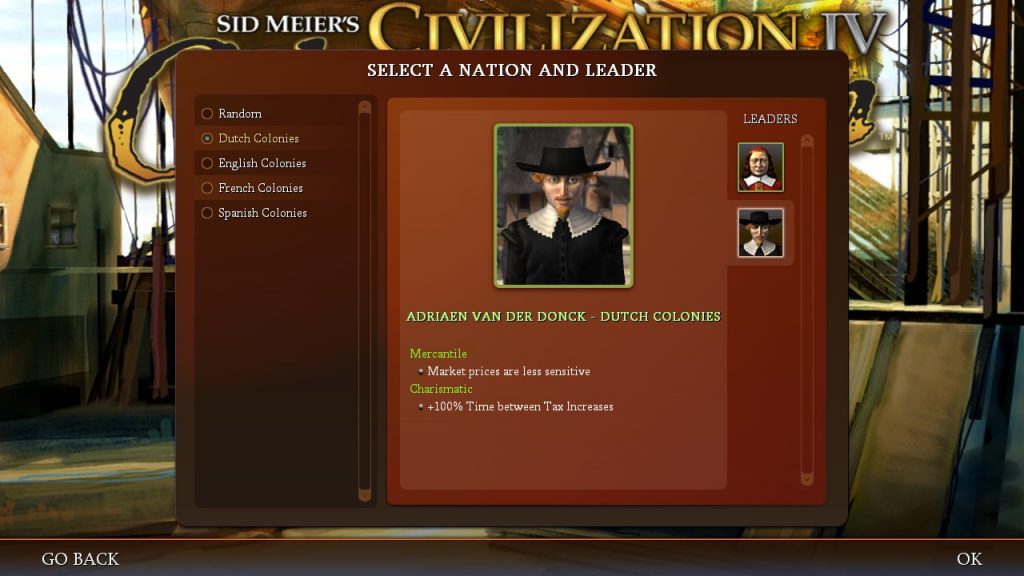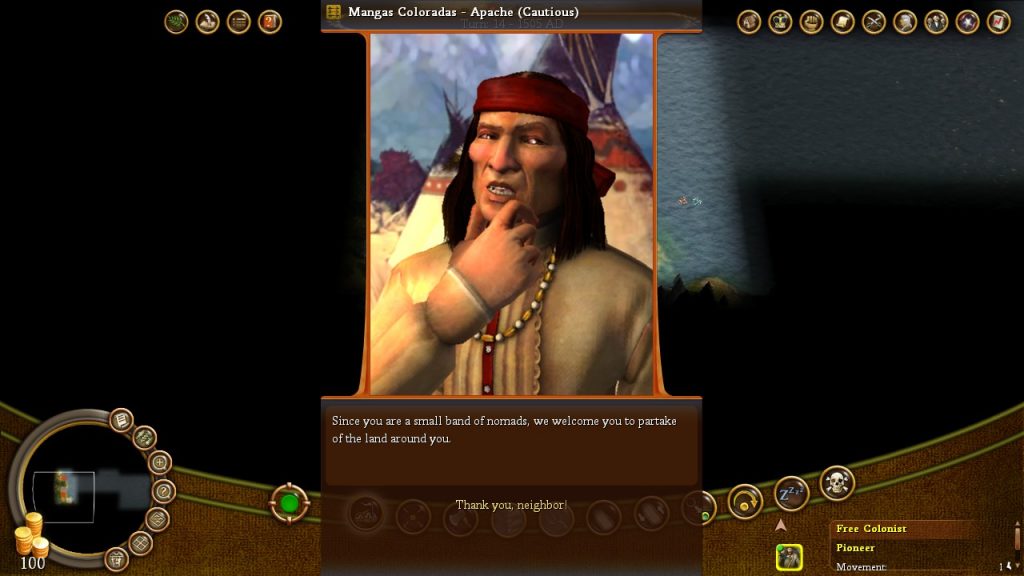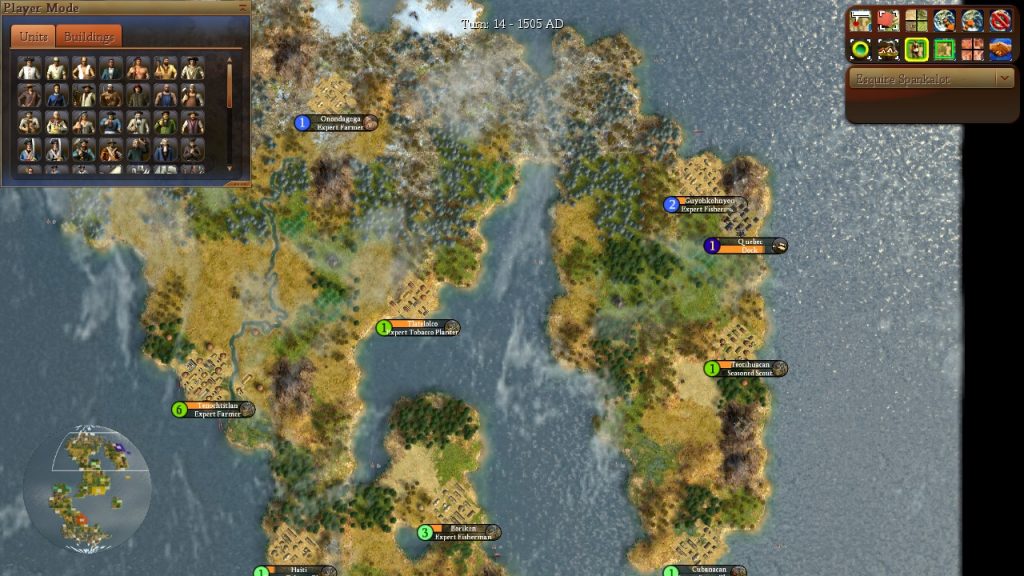INTRODUCTION
Well, I had to do them eventually, right?
Civilization has been a sort of slow chugging but ever strong steam engine within the last 20+ years of gaming history. Always on the edge of popularity but never in quite the main limelight, the Civ series drew in a unique but loyal crowd of fans. Those who loved playing militaristic board games like Risk or Axis and Allies, historian buffs with a love for all the diverse cultures throughout time and those who just loved games about starting out with a few resources and ending with a massive collection of stuff to manage were all counted among these fans. Finally, a game existed where these people could gather together and begin answering previously un-answerable questions like, “What would happen if George Washington met Genghis Khan?”
Even before I begin breaking down the Civ games, I can sum up a few broad opinions in their regards that I believe apply to them all to some degree. Firstly, Civilization is one of the only multiplayer games that I recommend only playing against computers. This may sound strange, since more often than not, multiplayer games are best played against real humans for a variety of reasons (you’ll learn to play better, humans are unpredictable etc.). When it comes to Civ though, playing with humans sucks the fun out of the game. For starters, humans take much longer turns than CPUs, which means unless you enjoy wasting a dozen or so hours playing a game and you actually have someone who’s willing to spend the same number of hours with you doing the same thing who won’t drive you nuts, then it’s likely not to be all that fun. Additionally, your friends aren’t going to role-play their nation like the CPUs, which sort of makes their nation feel a little faceless. Lastly, if someone in a multiplayer game of Civ goes military, everyone goes military. You can spout your cultural exploits and accomplishments all you want in the face of an army three times your size, but until you make it to the end of the game with all of those boons, they mean jack diddly. You must also consider that when a CPU goes military, you can beat him back into submission and he’ll keep on playing. A human wants to win though–the moment that they figure out they can’t win because they get crushed in the stone age, they aren’t going to want to invest another 8 hours into a game where they are essentially gimped from the beginning.
Civilization games are a lot of fun to play, but always come across to me as an incredible waste of time after the first quarter of the total number of turns a game takes. The beginnings of Civ games are fun and dynamic, with exciting impactful decisions being made on nearly every turn. Where you place a city early on can effect your entire empire for years to come. Each turn you can explore the unknown fog of war. Each scientific discovery greatly alters what your civilization can do. As the game progresses though, I find myself just mindlessly carrying out the plans that I set in motion back in the stone age. While it’s true that these plans have strategy and require thought to a degree, they also feel like they lack uncertainty or excitement. If I’m playing militaristic and I’ve conquered all my neighbors by the time I’ve passed the first age or two, I already know I’m going to win. If I’m playing culture and I’ve already pumped out the correct Wonders to snowball ahead of the other civilizations early on, I know that there’s very little they can do to catch up, and so on.
This turns into a bit of a catch-22 in some respects. Playing with humans is too time-consuming and often not very fun, especially if the human players conflict early on within the game. Playing against computer players often results in a better overall experience, but eventually boils down to the same repetitive actions turn after turn while you slog to what is generally an unexciting assumed victory. This is why, even though I have always felt the Civ series deserved applause to the highest degree, none of the games have ever struck me as personal Tier 1 material. They are definitely fun time wasters with a wealth of little pieces to play with over the massive course of a fictional version of our wold’s history but ultimately leave me feeling hollow inside whenever I finish a game, desiring something a lot more substantial. This leads me to believe that the game is best played by the aforementioned group of fans because unless you absolutely love the games, there’s not enough of a carrot at the end to warrant their casual play in the face of better enjoyed titles.
So without further ado, a brief breakdown of each game resulting from my happy fun times in Civilizations III and onward. Enjoy!
CIVILIZATION III
Oh. I played this when I was like, 9. Neat. Anyway…
Solid Tier 2 material. Honestly wanted to put it into Tier 1 except for the same caveats explained in the introduction. This game feels incredibly sturdy and it really must have been a graphical achievement for its time. It still looks relatively decent nowadays (maybe the kind of graphics you’d see in a flash game with a little too much money thrown at it) but this must have been one of the first games to have such a wide variety of detailed unique and fully rigged 3D models of human characters for 32 (!!) different nations. That’s a ton, especially for early 2000! To give you an example, the original Deus Ex game was released in 2000, one year before this game, and its models were extremely blocky by comparison. Admittedly though, Civ III could probably throw a lot more money and engine resources at these models, largely due to the fact their game lacks a lot of the assets an FPS requires, such as, well, environment in general.
I decided to give the Scandinavians a shot and I set about building the illustrious city of Anor Londo on Monarch difficulty. Immediately I was impressed by how even back in Civ III the game is at the ready to help explain any and all concepts with a simple click of the button. Don’t know what mood is or how it effects your game? Right click on it! Don’t know exactly what a worker can do? Right click on it! The in-game Civ-a-pedia truly turns what could be a frustrating and slow experience of learning the game into a fast and fun one. Within about 15 minutes, I’d learned all I needed in order to feel like I stood a fair chance at managing my empire.
Now, most of my experience comes from Civ V so a lot of my analysis will be against that backdrop. That being said, Civ III seems to have a *lot* more things going on the screen at once by comparison. You build units a lot faster and you have a lot more of them (the military unit tax is not quite so steep). Roads can be built anywhere as there is no upkeep cost, so get those workers a-workin’! Units, oddly, can be stacked, meaning that tactical play upon the grid of the board is practically non-existent. Civilians work the land, but happiness is very quickly a bigger problem in Civ III, requiring me to turn my early civilians into entertainers and courtesans in order to combat the dissent of my cities. Maybe it was because I was the seafaring Scandinavians, but water also seemed to be much less of an obstacle early on, as I quickly built a tiny boat and sailed around the world. Overall, turns themselves seemed to play out rather fast. 50 turns to invent the wheel seemed like a long time at first, but very quickly I had surpassed that count and was a couple advancements deep in other categories before I quit, only playing an hour or so.
You also get to… upgrade your palace? I have no idea what it actually does, but it was sort of fun to keep building it up from a stone-nothing to… well it was still stone by the time I was done but at least it looked nice.
As I played, I began to feel a bit encroached upon by my neighbor Portugal, so I decided to declare war on them. Sadly, I underestimated the unit stacking mechanic and the mighty Portugese made short work of Catarina and Anor Londo, resulting in my final concession of defeat. I would definitely play this game again. In spite of being 16 years old, it feels like it holds up quite strong as a fun tactical Civ game. It’s still a Civ game but different enough from Civ V to feel like it explores its own mechanics in a new way. Similar enough to be familiar, but different enough to be engaging. I know it must seem funny that I compare it this way in retrograde (as the normal progression would be to compare Civ V to Civ III if you were playing them throughout your life as they came out) but I think it shows that these games were built to be fun with a purpose in mind–they weren’t just the same thing shelled out for a quick money grab, nor did they lack ingenuity of design. Well… I say that but… now I’m looking at four different Civ IV games. Oh boy.
CIVILIZATION IV
The exploits of Anor Londo continue, this time under the tutelage of the fair and noble Aztecian empire!
Right off the bat, I’m going to just say that this one does not feel as good as Civ III. I can’t quite put my finger on it, but for some reason this Civ is just… boring–yet I feel a bit bad saying that. I mean, there’s nothing wrong with this game from a technical standpoint. In fact, visually and audibly there are plenty of upgrades from the previous installment. Units now babble in (what I can only presume is) their native tongue when you click on them, the game rolls in and out very smoothly from a rather close zoomed-in view to a top-down view of the world, units have gone from sprite renders to full 3-D models, and the game’ HUD is as informative as ever.
In spite of these improvements though, the game just didn’t feel as fun to play. Do you remember how I mentioned that 50 turns for a scientific achievement in Civ III flew? A meager 25 turns in Civ IV just felt like an eternity and I’m not really sure why. I think it’s possible that I just never felt like I was doing anything important. I played a good hour and the only task that I managed that seemed important in any way was scooting my 5 scouts around the map–and I only even built 1 of them. The rest were just given to me randomly along the way. Progress felt slow and unimportant. Now that I think about it, I’m pretty sure units took a lot longer to build when compared to Civ III as well. It’s possible that they were trying to cut down on the number of units on the board at any given point (a perfectly acceptable game design choice) but I feel that they were trapped in-between their design of Civ III and Civ V, whereas in Civ III you had a ton of stacking units and Civ V focused on fewer non-stackable units which made each piece you had on the board all the more impactful. In Civ IV you have fewer units that feel a bit more unique from each other than Civ III, but it still never came across as being particularly tactical, especially considering units still stack so it just comes down to massing up your forces all in one square. I appreciated seeing the scouting unit as well (as I was familiar with its use in V) except… it couldn’t fight and had no bonus movement as far as I could tell, so I was rather confused what its purpose was.
The 3-D rigs for the political leaders are less creepy in some ways compared to Civ III but… more creepy in others. I mean, on the one hand, they are clearly meant to be more cartoony instead of III’s more realistic approach but that still just means that there are creepy cartoony political leaders looking at you. Even though III hit uncanny valley a bit with their models, I actually think I prefer its models better.
There was one thing about this game that I actually liked a lot. It sounds simple, but I thought it was a pretty cool design choice that made a lot of sense mechanically and flavor-wise. Instead of early-game barbarians being portrayed as roaming groups of uncultured heathens throwing their animal-hide-armored carcasses onto the point of your spears and axe-blades over and over, they are wild animals, savage and untamed. I just felt like it was a great way to introduce a different kind of enemy into the game that made a lot of sense to a degree. It’s easier for me to believe that early on in the history of a nation, it wouldn’t be other humans that posed the most threat, but the wilds themselves.
In the end, I had made friends with all the political leaders on the island, and even managed to build the pyramids when a lone barbarian squad rolled into my capital before I could reinforce it. Once again, Anor Londo was burnt to the ground, ending its legacy in Civ IV. Overall, I didn’t feel like this was a bad game, but I just didn’t see enough value in it to feel like it deserved any attention. Civ III felt robust and open; rough around the edges but in a strong sense. Civ IV just feels like a repeat of the old with not enough new to warrant a strong commitment towards more of the same with different visuals. I believe it belongs in Tier 3, but only from a technical standpoint–I stress again, it’s not a bad game, just not one that I feel you need to play in light of having the other Civ titles available.
CIVILIZATION IV: WARLORDS
Uh… okay, so this is erm… Civ IV with more stuff. And stuff.
So… not having enough familiarity with Civ IV to really understand what was added (aside from a couple new nations/leaders) I just jumped in and played the beginning of another game. I think that the character models were updated as well. They seem a bit smoother with more appealing proportions. Maybe that was just me.
In case you cared, Anor Londo was built under the Chinese this time and managed to spawn Catarina and Heide’s Tower, suitably along the coast. Heide’s Tower become an industrial powerhouse, able to crank out Wonder after Wonder, while Anor Londo became overpopulated with angry citizens to due its explosive population growths. Catarina was left a vague town with little identity that was largely unattended and did little more than take up space, and far to the North I established Fire Link, which lasted a grand total of 1 turn before it was sacked by Barbarians, turning it into a ruin. You know… now that I think about it, a lot of what took place in my game was a bit too close to the lore of Dark Souls.
Most of my comments about Civ IV roll over to this installment as well, although you can’t really argue with more nations, better AI, tweaked/balanced rules and a few more features. Given that this is essentially just Civ IV with more stuff, I can’t see a real reason to play the vanilla Civ IV save for that you might have possibly disliked some of the new mechanics added in. Once again, technically better, once again technically placed in Tier 3.
Also, this guy.
CIVILIZATION IV: BEYOND THE SWORD
Err… hay gaiz. Civ IV with even more stuffz!
So, in case you liked stuff with your stuff, here’s some more Civ IV stuff. Arguably, if you’re going to play a Civ IV game, you should just play this one. It has 16 more leaders on top of the 10 more from Warlords and the original 26 leaders from the vanilla. There’s a slew of additionally features on top of what was added in Warlords, including espionage, natural disasters and an expansion on the space victory–requiring civilizations to reach Alpha Centauri instead simply launching to the moon. Tired of playing the traditional game though, I tried to give one of these “Scenarios” a shot that I kept seeing in every Civ game. It was a mistake.
After an opening that felt borderline flash-game, borderline fan-fiction and borderline bad 90’s sci-fi flick, I was introduced to what I can only describe as a really, really crappy fan-mod of all the bad parts and none of the good parts of a Star-Craft/Fire Emblem arcade mod hybrid. You see, what makes Star Craft arcade mod games fun is that they happen in real time, and through micro and general Star Craft game knowledge, one can increase their chances of survival. True, at their basis they are usually relatively shallow (kill all the things that come near you) but through actively used skill, speed and strategy simplicity becomes fun and exciting. Fire Emblem is a grid-based take-turn tactical game (a sort of mix between Chess and Risk) that derives its fun through the leveling up of core distinct classes that often have the choice to advance to other classes, all the while backed by a clearly defined age-tested combat system where failure results in character being permanently removed from the game’s story when they die. Then there’s Beyond the Sword’s scenario “Aftermath.” It has all the slow tedious grid-based combat of Fire Emblem with none its complexity, mixed with all of the low-quality gratuitous time-wasting of a Star Craft arcade map with none of the active skill. In short, I felt like I was playing a weak tack-on game that barely qualified as something one might do for fun.
This really just shouldn’t have been here. It’s not a Civ game, it’s not really even a good game, and its attempt at story-telling just feels misplaced within the Civilization universe. I’m sure someone out there liked it, but I would guess that they either haven’t played anything of this type of game before or are so hungry for grid-based combat games that they were willing to consume this. Were I to rate the game on this scenario alone (which is apparently a several-mission-long game) it would be Tier 4 for its odd theming within the context of Civ, insulting simplicity and time-wasting nature. As I am not, I will simply say this: Civ IV: Beyond the Sword is the final culmination of Civ IV’s efforts to create a fully saturated Civilization experience. I feel that I can at least respect that enough to award it as Tier 2, as finally it branches out to try things not done before–even Civ V’s space victory does not involve the option of building a better space ship than your opponent so that it can reach Cenatauri faster (it no longer mattering who is the first to launch the ship, but mattering who builds the better craft). Just… maybe stay away from the scenarios unless you have some serious time to kill. Seriously–it’s like… Sid Meir’s Ace Patrol bad.
CIVILIZATION IV: COLONIZATION
Uh… what!? Can I go home now?
I’m not going to lie to you on this one. I did *not* spend any time playing this. Like 5, maybe 10 minutes tops. This is just another one of those games released under Sid Meier that just leaves me scratching my head and going “…Why?” Pretty much the same reaction I had when playing Sid Meier’s Ace Patrol or Sid Meier’s Trains. On the one hand, we’re dealing with a smooth, well-built engine that performs exactly the task it was designed to do. On the other hand, we’ve got a game that I’m not sure anyone asked for or even wanted. Civ IV: Colonization is a game where you manage a group of pioneers sailing over from Europe to settle in the “New World.” I chose the Dutch. Because Anor Londo needed to be built by the Dutch, I guess.
The game focuses much more on trading than it does advancing through the current of time. You can send ships back and forth to Europe, grabbing new settlers, builders and supplies. Likewise, setting up a new town gives you the option to manage which trading post it runs. And of course, let’s not forget the Native Americans.
I gotta tell you, I understand why Fraxis made the game design choices for this scenario that they did. I understand that they were trying to recreate a simulated experience based upon the historical events of Europeans sailing over to the Americas. However, the moment I settled my first city and was greeted by the nearest Apache Indian, I couldn’t help but feel extremely racist. I mean, Civ IV cities have borders around their land–it’s just a natural mechanic of the game. The Native American cities don’t… have borders. And they great you openly. And tell you take whatever land you wanted. I just sort of felt like a predator or a leech after that and didn’t have much desire to continue playing.
Colonization just doesn’t feel like much of a game that’s worth anyone’s time and feels more like an excuse to release another game primarily recycling existing assets from the previous Civ IV games. It scrapes the bottom rung of Tier 3, only avoiding Tier 4 because I guess they were trying something “new.” Then again, this is the second Colonization game, so I can’t really even give it that merit.
CIVILIZATION V
Sorry, but I don’t have any fancy screenshots for this one as I uninstalled it a long time ago. However, according to Steam, I’ve got 195 hours logged into the game. This is a little concerning because I honestly can’t recall how I spent so much time playing it and I wonder how much of that was idle time. Oh well.
I feel like out of the bunch listed here, this one is a very solid platform for Civilization. It’s almost like the ebb and flow of D&D or something. 2nd Edition brought about core game mechanics that everyone loved. 3rd and 4th brought about a tirade of options, expansions, add-ons and generally put, an overwhelming amount of content. The most recent release of 5th edition took a step back and made things a lot simpler–not shallow, but simple, easier to use and easier to keep track of. I feel like Civ went through the same process. Civ III established a lot of what everyone loves about Civ. Civ IV (and its many expansions) went overboard and tried to provide too much content in too complicated of a format. Civ V takes all of the aspects of civilization and condenses it into pure goodness.
See, by making things simple, even a slight divergence from the simple becomes massive. Therefore, the minor skills and tweaks each civilization and, to some extent, each unit has creates a more distinctive experience when interacting with all the pieces. Most military units can’t stack in Civ 5, which means you need to plan out how to attack locations strategically. (Here’s a hint–cities on the end of peninsulas are *really* hard to capture by land alone). Roads now have to be up-kept, but cities connected by roads grant extra gold. This means that you can’t road-spam every tile of your territory, but it does mean that careful road building still pays off within your kingdom.
A lot of features of the game feel more straight-forward. Build X get Y. Choose Q religion get W benefit and so on. Military tax gets steep, even if you are going down the military routes, which means overall you’re going to have fewer army pieces on the board, which means fewer pieces to keep track of, which means the few you do have are more meaningful. Don’t get me wrong, I sort of love that in III I had a ton of sustainable warriors within few dozen turns, but I think overall V has a better design focused on balance, playability and your ability to make meaningful tactical decisions. Tier 2, and probably highest of the bunch with Civ III close behind.
So, with all of that being said–with over 5 Civ game reviews under my built I only have one thing left to say, and that is…
That Ghandi is still a $%*#@!# jerk.

